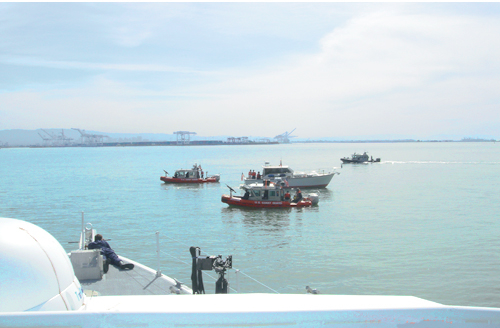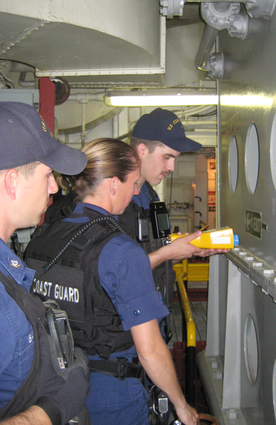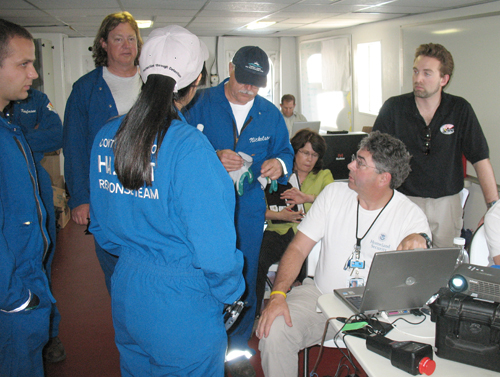Maritime exercise shows off radiation detection
Several dozen military and law enforcement officials tested their radiation detection equipment and polished their skills during a two-day exercise last month on San Francisco Bay.
Sponsored by LLNL and the Monterey-based Naval Postgraduate School (NPS), the exercise focused on detecting nuclear materials on the first day and screening small boats for similar materials the next day.
"I think the exercise went very well on both days, but particularly on the first day as we had a plan that allowed all the groups to use their own equipment and obtain individualized instruction," said Bill Dunlop, a senior scientist in LLNL's National Security Office.
On April 20, about 50 first responders from nine different organizations searched for five radiation sources placed in three locations on the Maritime Administration (MARAD) ship Keystone State, docked at the north end of Alameda Island.
Their efforts included: detecting radiation sources, training on the use of their equipment and the use of their "reachback protocols," including verifying whether radiation signatures showed characteristics of nuclear materials, Dunlop said.
On April 21, two Coast Guard boats were placed in position to form a portal. Next, seven other boats operated by the Coast Guard auxilliary went through the portal, three with radioactive sources on board.
"When radiation was detected, another boat pulled alongside the suspect boat and checked to confirm the finding," Dunlop said.
Law enforcement and military officials who participated in the exercise indicated their staff found it helpful.
"The Orange County Bomb Squad and Harbor Patrol personnel benefitted from the opportunity to actually obtain neutron readings on our equipment (something we hadn't seen in the past) and the training environment was exceptional," said Chris Jensen, a bomb/hazmat technician.
Staff Sergeant Michael East of the California National Guard noted: "It was an excellent exercise using our radiation equipment in a unique environment. We appreciated the opportunity."
Other agencies that participated in the exercise were: Coast Guard District 11, Coast Guard Sector San Francisco, Customs and Border Patrol, the California Highway Patrol, the Contra Costa Health Services HazMat team, the Alameda County Bomb Squad and the Port of Stockton.
For the NPS, the exercise offered a chance to study tools for rapidly deployable communications networks. For LLNL, the event permitted the study of radiation detection technologies in a maritime environment and further study of ultrawide band communications.
Among the Lab employees who participated in the exercise were: chemist Arden Dougan, health physicist Dave Trombino, engineers Dan Haynes, Bill Siegel and Philip Top, Marco Garcia of the National Security Office and part of the Department of Energy Radiological Assistance Program team based at LLNL.







